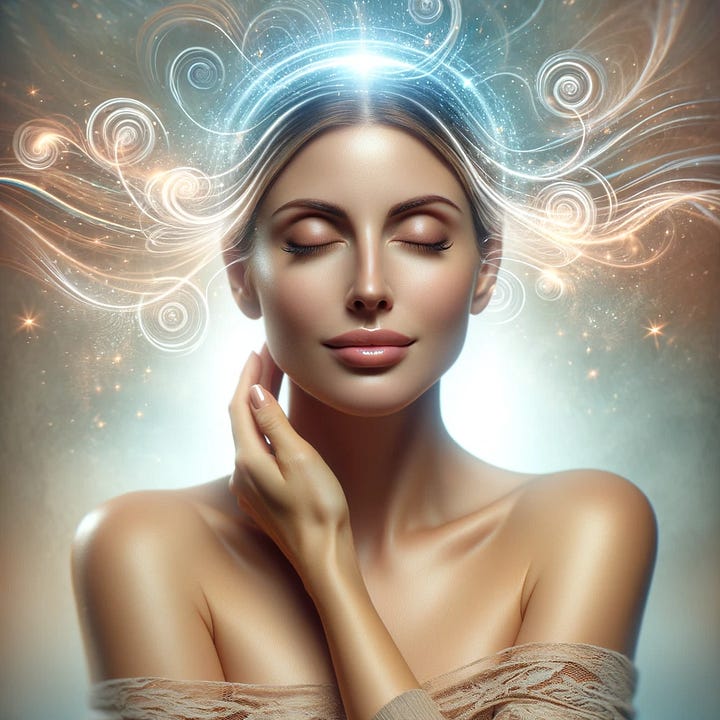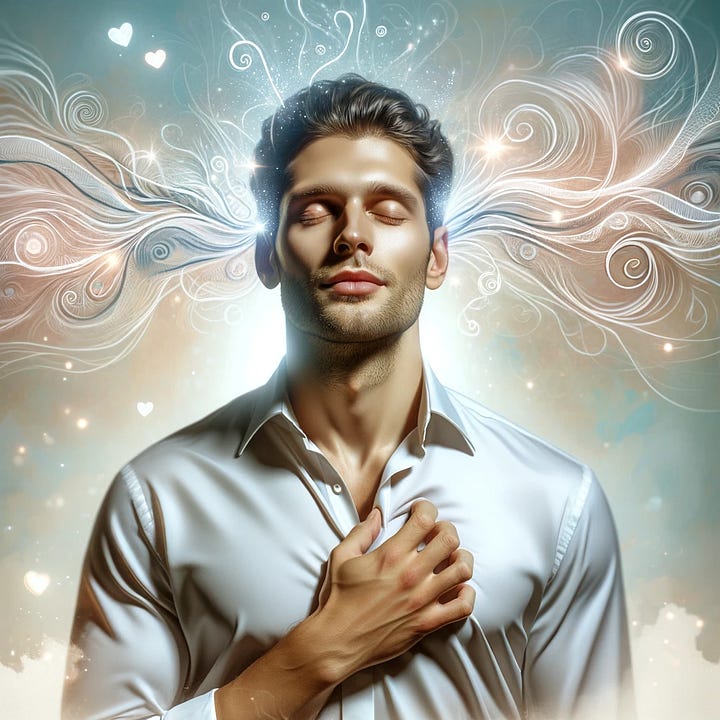If you know me, you knew this was coming.


I’ve experienced ASMR my entire life. Literally since I was a small child playing SNES (Super Nintendo Entertainment System for all you youngsters) I would experience a tingling sensation in my head and fall into a kind of trance in certain situations. In most cases, the common denominator between all of those situations was someone kindly, gently and deliberately performing a task. Bob Ross is a great example of someone who exhibited these traits. No one can deny his kindness and his gentle demeanor, and his task was teaching you how to paint. Another example would be telemarketers, specifically ones who were conducting some kind of survey. In general, these people are coached to be professional and nice to the callers, and their preparedness and professionalism as they systematically asked questions and remarked on your answers were the equivalent of “deliberately performing a task.” I could provide endless examples, but honestly, if you don’t get it from those two, you probably never will.
Most people do not experience ASMR, and of the people who do, it seems that no two people have the same set of triggers. Triggers are the conditions that elicit the “R” of ASMR. That is, the response. In most cases, the response is a pleasant, warm tingling sensation that starts at the crown of the head, and as it intensifies, moves its way down the back of the head and into the shoulders and spine. Some people may even experience it deeper throughout the body, but I never have.
It’s extremely hard to describe the feeling. For many years I thought I was the only one on the planet who felt it. Indeed, lots of people who claim to experience ASMR also report feeling like a party of one.
I remember being a teenager and saying to a friend, “you know that feeling when someone is showing you how to do something and you kind of go into a trancelike state?” Their blank stare confused me, at first. I fully anticipated a simple, “yeah,” and then I was going to continue my story. Instead, I scratched my head and said, “never mind.” Over time I realized that every time I brought it up, I got the same reaction - that is, no reaction - until at some point in my early 20s I just stopped asking people about it and assumed it was just a me thing.
That all changed in 2010.
I remember it well. I was living in Korea, sitting on my then-girlfriend’s bed, cruising Reddit and blasting links when something I was reading suddenly caught my attention. It was an article, which I couldn’t produce for this post, describing in detail the trancelike state I knew so well, but using words and terminology that I’d never heard before in this context. Words like, “tingle” and “trigger” and so on, until the author landed on the big whopper: ASMR. I ravenously read through the article, and my heart started pounding. IT’S REAL!
I couldn’t believe it. I was 27 years old and just now discovering that this very intimate, personal, pleasurable, special sensation I’d always felt, and that always hit me by surprise and never lingered as long as I’d liked, was not only real, but so real that some scientist on the internet could describe it better than I could. Someone out there was normalizing it. Very few things in this world have made me feel more seen.
I’m not even kidding. I’d held onto ASMR my entire life, longing for the moments when it would occur, and privately savoring them, in part because it felt like pure peace, but also because I couldn’t stop thinking about how no one else felt it. It made me wonder, will this be the last time? Is it going to go away? Will I grow out of it? Is there something wrong with me? I’d previously thought all these things pretty regularly. That is, until I read that article.
When I finished reading the article, I jumped out of bed and stammered through an explanation of my discovery to my girlfriend, who could sense something major was happening, but did not connect with it, nor could she understand why it was such a big deal. Bless her. Very few people could.
Since then, I have had the privilege of explaining ASMR to two people who suddenly realized in that very moment that someone else in the world experienced what they privately experienced. The looks on their faces were priceless. Curiosity turned to shock, shock turned to denial, denial to belief, and finally belief to sweet, sweet relief. I swear, it’s like finding out you and someone else both share the exact same memory from childhood. It’s freaky.
Alright, so… what is ASMR?
ASMR stands for Autonomous Sensory Meridian Response. Now that you know that, you know everything there is to know about ASMR.
If only.
Autonomous Sensory Meridian Response is an ambiguous name, and offers basically no information about the phenomenon. A lot of us in the ASMR “community” wish there were a better term for it, but it appears to have stuck.
Here’s how wikipedia breaks down the acronym.
Autonomous – spontaneous, self-governing, with or without control
Sensory – about the senses or sensation
Meridian – signifying a peak, climax, or point of highest development
Response – referring to an experience triggered by something external or internal
Let’s go through the acronym letter by letter.
A - Autonomous
* Spontaneous
ASMR is spontaneous. You cannot conjure it on your own. When people ask me what it feels like, I often compare it to two sensations they are familiar with, happening simultaneously: staring, and the chills. Mind you, ASMR is not the same as these two things happening, but it’s the closest approximation I can come up with. Staring is generally spontaneous and also enjoyable; you don’t usually want to be interrupted during a moment of staring. The chills are not necessary enjoyable, but they are sort of an internal/external sensation that isn’t painful, and that might even provide a jolt of pleasure, but is only fleeting. The iconic “tingles” of ASMR are persistent and pleasurable.
Oddly, though, spontaneous is strange word to be included in a definition of autonomous. To me, autonomy and spontaneity are not really related. Autonomy to me is related to sovereignty and control, but perhaps that’s neither here nor there. Moving on.
* Self-governing
Honestly, I have no idea what they’re getting at here. ASMR definitely requires an input, a so-called “trigger,” and even then, it’s fleeting. I’m not sure what is meant by self-governing here. It doesn’t happen by oneself, and one does not govern it.
* With or without control
Again, there is not really a way to control it, per se. Over time, you can observe the conditions that induce the feeling, and later attempt to recreate those conditions, but even still, it comes when it wants, and it’s possible that “tingle immunity” is a real thing. The more you seek it, the more elusive it gets. More on this later.
S - Sensory
* About the senses or sensation
This is self explanatory, but it bears mentioning that both the input and the output are sensory related. Inputs, again called “triggers" in ASMR-land, can be any number of phenomena, such as whispering or soft-speaking, tapping or crinkling, and even the bizarre “mouth sounds” (the myriad sounds a wet mouth makes when a hot mic picks up every last decibel). One person’s trigger will make another person cringe, even if they both experience ASMR.
M - Meridian
Peak, climax, point of highest development
The M might as well stand for mystery or misdirection because this is where all the weirdness of ASMR enters the equation. While “peak, climax, highpoint” make sense when referring to the actual pleasurable part of ASMR, these terms are often interpreted sexually. In fact, “orgasm” was one of the early terms used to describe the phenomenon.
“Although many colloquial and formal terms used and proposed between 2007 and 2010 included reference to orgasm, a significant majority objected to its use among those active in online discussions.”1
ASMR can be sexualized, just like anything can be sexualized, and because sex sells, you end up seeing a lot of sexualized ASMR content rise to the surface. Due to the fact that ASMR is such a new and strange phenomenon, the sexualized content is often the first exposure that people have to it, and so they associate sexuality with ASMR, when they really don’t have anything to do with one another. Sex has as much to do with ASMR as it does with cheeseburgers, cars, watches or Fabreze. If you can use sex to popularize it, you will.
R - Response
An experience triggered by something external or internal
In my experience, ASMR is never triggered by something internal. It is 100% triggered by something external, and it is always triggered by another person saying and/or doing something. I’ve never heard of ASMR being triggered by an internal state of the person experiencing the sensation.
So ASMR is a spontaneous (A) sensation (S) that is pleasing (M) triggered by someone or something (R).
I want to linger on the M for a second to dispel some dirty, dirty rumors. ASMR is not, I repeat not, a sexual experience. I experienced ASMR long before I had any clue what sex even was, and now that I know what sex is, ASMR feels nothing like it. ASMR is trancelike, calming, peaceful and light. Imagine that just for a moment, stress, anxiety, doubt, guilt, sadness and worry, as well as ambition, intellect, awareness, and control are all swiftly lifted out of your body. All that remains is a mental sense of weightlessness - like your brain not needing to do work - combined with a physical sensation of warmth and buzzing (the tingles) along the scalp and shoulders. That’s what ASMR feels like to me. Someone else may not describe it that way at all, but that’s my ASMR. It feels … safe.
When I was young, ASMR happened to me completely randomly. Like I said, it was often strangers like telemarketers, or TV personalities like Bob Ross (often called the Godfather of ASMR) who triggered it for me. But now that ASMR has hit the mainstream, so to speak, there are thousands of creators online whose entire business model is dedicated to producing content that is designed to induce ASMR for its viewers and listeners. (I’ve even started a channel recently that is barely getting off the ground called Buzzz Words ASMR that combines ASMR triggers like typing and soft-speaking, with my creative writing and poetry.)
When I first read that article back in 2010, I immediately took to the internet to search for more information about it, and that’s when I discovered some of the first curators, called ASMRtists (ASMR artists), on YouTube. I always feel funny saying their names, but GentleWhispering, WhisperCrystal, CuteBunny992, and many others were among the first channels that I really binged.
Nowadays, ASMR is a part of my daily life. It’s like a companion to me. (I’m literally listening to it as I write this entire post.) Probably half of the channels that I follow on YouTube are ASMR channels, and I’ve spent over 10 years discovering different ASMRtists. Some of them come and go, and some of them stand the test of time. A personal favorite of mine lately is Ting Ting, a beautiful Chinese woman who specializes in role play ASMR content, like medical examinations, tea shops, tattoo appointments, face mapping treatments, and so on.
I know what you’re thinking. Beautiful Asian woman, Fletcher? Role play?! Are you surrre it’s not sexual?
Like I said, a n y t h i n g can be sexual. Here she is preparing some special medicinal tea for you. You tell me, is this sexual?
I’d say not at all. Just because she’s pretty, doesn’t mean I have a weird Asian fetish. In fact, you’re the sicko.
I’ll admit, though, there are very good reasons to think that ASMR is linked to sex. For starters, the vast majority of ASMR content on the web is generated by women, almost always of above average attractiveness, and their audiences are often majority male. This is testimonial data. I haven’t actually looked at the numbers, but you do not have to. I promise.
The other reason is exactly what I was talking about in the Meridian section above. Sex sells, and so some of these beautiful women take advantage of their ability to get attention by sexualizing themselves, use ASMR to create their niche, and voila, money go up. I don’t blame them - get your bag - but it doesn’t mean that ASMR and sex are intrinsically linked. And just to be clear, most of the content out there is generated by good people who are trying to help.
What is ASMR for?
I consume ASMR content to relax and block out background noises as much as I use it to actually induce the sensation. It’s often the case that I will listen to a video on repeat and never once get the tingling feeling, or fall into a trance, especially if it’s a video I’ve seen more than a few times. This is often called “tingle immunity,” which is one of the most niche terms in the world, but it’s real! There must be a de-sensitization to ASMR just like there is to anything else: coffee, drugs, violence on TV, endless war, etc. The more you consume it, the more infrequently you experience the desired effects.
Fortunately, though, almost every ASMRtist creates content with more to offer than just the quintessential tigger/sensation as the focal point. The videos often educational, funny or otherwise entertaining. For example, by using the role play format, creators sometimes portray educators who teach their viewers new languages, or math, or facts about space, etc. in the style of ASMR. Sometimes creators invent quirky characters who appear in multiple videos with their own backstories that viewers get invested in, just like any TV or movie character. Other times they will have guests appear as “patients,” who are receiving a cranial nerve exam. Whatever the case, it has become a burgeoning community that offers viewers various forms of content to help them relax and sleep, not just to induce…
~ the tingles ~
I still keep it mostly to myself. I have found that it is very difficult to talk about it without giving people the wrong impression, or making them feel uncomfortable. Other times, people think they know what I’m talking about, and compare it to frisson, which is a feeling lots of people get during the emotional climax of a song or movie. Here’s the first paragraph of the wikipedia article about it.
Frisson (UK: /ˈfriːsɒn/ FREE-son, US: /friːˈsoʊn/ free-SOHN[1][2] French: [fʁisɔ̃]; French for "shiver"), also known as aesthetic chills or psychogenic shivers, is a psychophysiological response to rewarding stimuli (including music, films, stories, people, photos, and rituals[3]) that often induces a pleasurable or otherwise positively-valenced affective state and transient paresthesia (skin tingling or chills), sometimes along with piloerection (goose bumps) and mydriasis (pupil dilation).[4][5][6][7] The sensation commonly occurs as a mildly to moderately pleasurable emotional response to music with skin tingling;[4] piloerection and pupil dilation not necessarily occurring in all cases.[6][7]
ASMR and frisson are definitely closely related, but as someone who definitely experiences ASMR, and as someone who both appreciates and plays music, they’re very distinct. The biggest difference to me is that frisson is characterized by intense or heavy emotion, whereas ASMR is characterized by calmness, peace and tranquility. The chills in frisson are not the same as the tingles in ASMR, but they’re both great!
So who cares, right? I mean who gives a shit about ASMR?
Well, obviously I do. It’s a very special part of what makes me, me. It’s a part of my character, my personality, my toolkit that helps me deal with the chaotic world in much the same way that meditation or prayer work for other people. The ASMR community is also very warm and welcoming, and it has helped thousands of people, maybe even millions at this point, find peace, relaxation and sleep, which are incredibly significant for improving and maintaining positive mental health.
By now, ASMR is a familiar word, but the actual experience, the real niche sensation, is still a mystery to most people. Perhaps it will always be that way because, despite its rise in popularity on social media, most people I talk to still report that they do not feel what I describe. Alas. In the same way that the article in 2010 sent shivers up my spine when I learned that someone else knows what I know, or the way I saw my two friends’ faces light up when I described this strange, curious little sensation, I hope that someone reading this experiences a connection that makes them feel a little less isolated than they did before.
https://en.wikipedia.org/wiki/ASMR




Well done. We have talked about this and I have enjoyed exploring. This makes me want to revisit ASMR. Especially for sleep issues. Thanks Fletch.